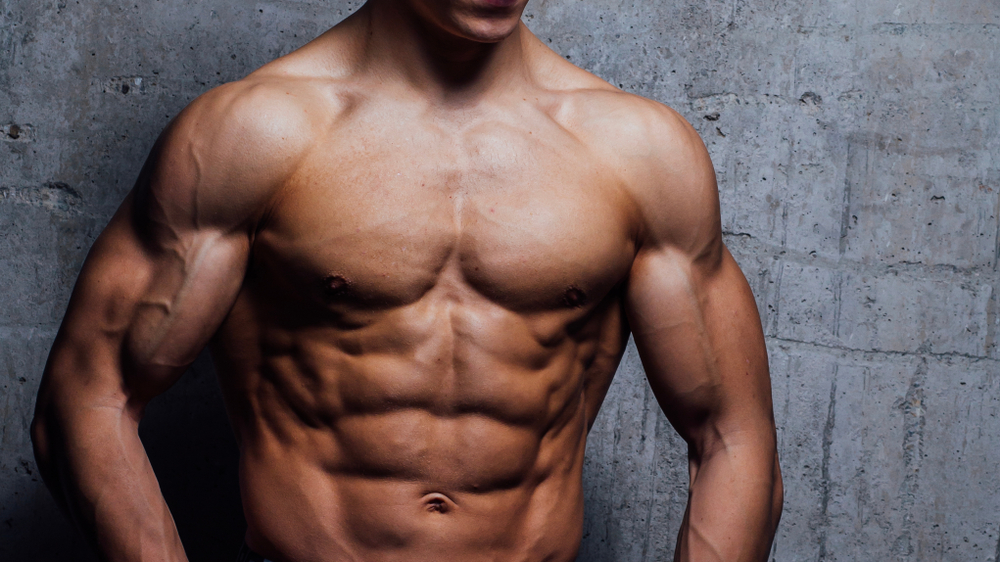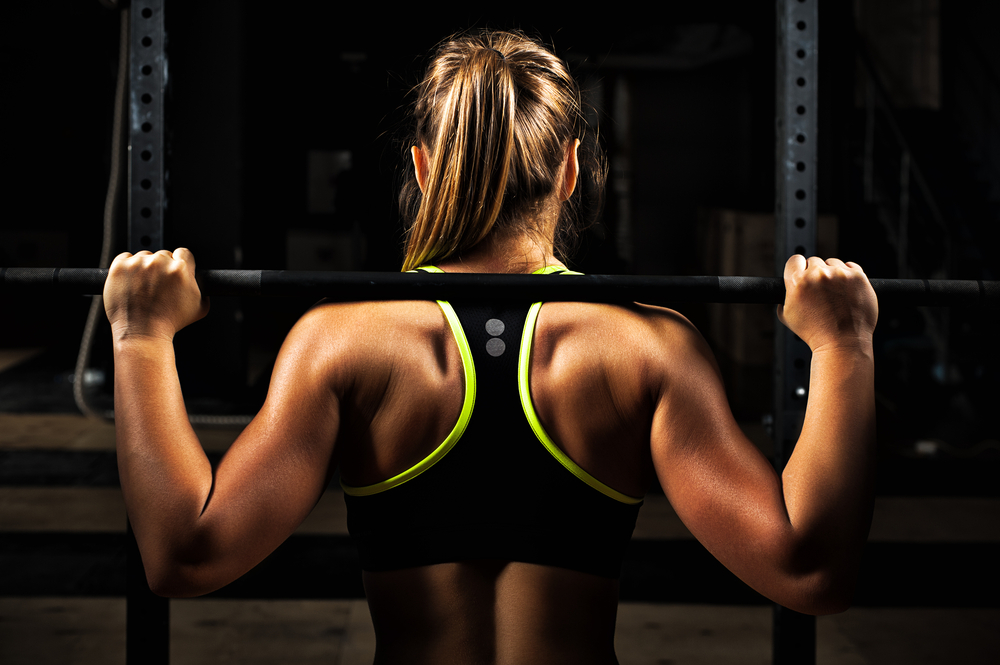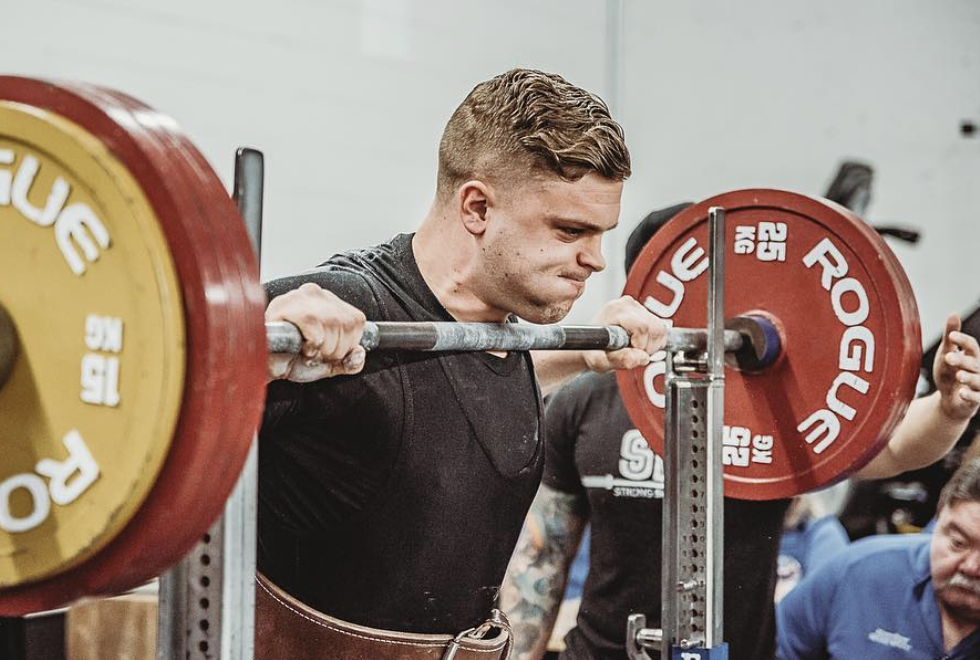How many times have you heard the phrase or the idea that squats and deadlifts are enough to build a strong core? More than likely you’ve heard this phrase at least once in your lifting career — and it’s misleading to say the least. For starters, this phrase gives off the impression that all you need to do for a strong core is perform squats and deadlifts, which can be incredibly misguided for beginner strength athletes, especially newer powerlifters.
Second, it paints the core as a one-dimensional object that only responds to one form of exercise and movement, which is not true from a purely anatomical and functional standpoint. Lastly, it’s not an efficient way of thinking about core training, so if your goal is to get somewhere sooner than later with core strength, then it can be a crux to progress.
So, what gives? Where did this idea originate and how should the core really be trained for strength and aesthetics. Let’s take a look at what the core consists of along with its various movements where this training ideology could have spurred from.
What Is the Core?
It’s More Than the Abs
For many gym newbies, the core is thought to only consist of the rectus abdominis (abs) and obliques, you know, the sexy beach muscles, but it’s so much more. The core actually consists of multiple muscle groups and is the combination of the full trunk’s musculature. There are superficial and deep core muscles that all work together and play a hand in our body’s trunk’s flexion, extension, and rotation.

Before going over the muscles, it’s important to note that the core can be defined in different ways based on how a coach and athlete views it. Below are some of the core/trunk muscles that typically get roped in when people reference the core,
- Rectus Abdominis
- External/Internal Obliques
- Transverse Abdominis
- Lumbar Multifidus
- Erector Spinae
- Pelvic Floor Muscles
- Quadratus Lumborum
- Longissiumus Muscles
- Glutes
- Diaphragm
- Rectus Capitis
- Latissimus Dorsi
- Traps
This list may seem long, but it can actually go on further. So as you can see, the core is much more than just the abs and obliques. Why are we covering this information?
Well, as we dive into some of the research below, we can keep in mind just how complex the core really is, so when studies look at one or a few muscle group’s EMG ratings during exercises — they don’t really tell us the whole picture for the core during that specific exercise.
What Does the Core Do?
The core has a ton of different functions and these will all vary based on the activity being performed. In short, the core muscles move the trunk in all three planes of motion (frontal, sagittal, and transverse). In an athletic setting, the core muscles assist with trunk stability, dynamic movements, and injury prevention. And on a day-to-day basis, the core muscles resist gravity 24/7 and support our ability to breathe properly.
If we didn’t have core muscles, then we would all be folded over, struggling to breathe, and unable to lift and play sports.
Squats and Deadlifts Are All You Need?
Where Did This Logic Originate?
Like with most ideologies in strength training, it’s tough to pin down the exact origin of where this idea started. If we look at it from a logical point of view, more than likely the idea was perpetuated through individuals interpreting electromyography (EMG) research of the squat and deadlift from an end-all-be-all point of view.
In layman’s terms, most likely a few pieces of research highlighted different groups of musculature worked during the squat and deadlift (the trunk musculature in this case), then suggested they were efficient at training the core, and some individuals probably took that to heart and as all we need — thus spreading that logic around to clients, friends, and so forth. I mean, hey, who wouldn’t like to squat and deadlift only — all the of the time?
The Squat and Deadlift Do Strengthen the Core
We know the squat and deadlift are great at building muscle overall on the body, but let’s look at some of the research from the last two decades that highlight the core musculature’s EMG specifically in these movement.
Potentially the most popular study that gets thrown around on this topic is a review published in 2013 in the Journal of Strength and Conditioning Research (1). This review wanted to find a consensus and assess which exercise modalities were the most efficient at targeting the core musculature, and more specifically, the lumbar multifidus, transverse abdominis, and quadratus lumborum. Researchers compared multiple studies and differentiated exercise styles into five different groups including traditional core, core stability, ball/device, free weight, and noncore free weight.
Upon the conclusion of their review, authors suggested with moderate evidence that the lumbar multifidus EMG ratings were higher in free weight exercises compared to ball/device exercises and were similar to core stability exercises. Additionally, authors suggested that free weights facilitated a similar EMG rating in the transverse abdominis compared to ball/device and core stability exercises. There was no conclusive evidence suggested for the quadratus lumborum.
In their review’s abstract authors conclude with, “The available evidence suggests that strength and conditioning specialists should focus on implementing multijoint free weight exercises, rather than core-specific exercises, to adequately train the core muscles in their athletes and clients.”
If you only looked at the abstract for this study, then it’s pretty easy to see why the squat and deadlift ideology gets taken out of context. Diving into the physical review though, authors analyzed the quality of studies in relationship to each muscle assessed. Here are a few of the most notable takeaways on each muscle group that mention free weights below.
- The lumbar multifidus had three moderate quality studies that compared free weight exercises to ball/device exercises, and these studies suggested that free weight were slightly better, and one low quality study suggested no difference.
- In one moderate quality study, transverse abdominis EMG ratings were slightly higher with noncore free weights compared to free weight exercises.
- There was no significant evidence found in respects to the quadratus lumborum.
There were 17 studies included in this review and only a handful of them suggested that free weights were inherently better at targeting the analyzed core muscle groups. Objectively looking at this review, the research presented is a little thin, in my opinion, and lacks context of individuals who have higher levels of training experience, specific strength sport goals, and more developed baseline levels of core strength.
Another study published in 2007 in the Journal of Strength and Conditioning Research compared EMG ratings in the lower abdominals, external obliques, upper lumbar erector spinae, and lumbar-sacral erector spinae with a deadlift and squat performed at 80% 1-RM, a bodyweight squat, superman exercise, and a side bridge (2).
Authors suggested that that squat facilitated a higher EMG activation of the lumbar-sacral erector spinae compared to the deadlift and the other exercises, and the deadlift produced a higher EMG rating for the upper lumbar erector spinae compared to the squat and other exercises. In respects to the lower abdominals and external obliques, researchers suggested that there were no significant differences between the movements.
In the concluding sentence of this study’s abstract author’s write, “Individuals performing upright, resisted, dynamic exercises can achieve high trunk muscle activation and thus may not need to add instability device exercises to augment core stability training.”
The sentence above can be easily misconstrued with the ideology discussed in this article, and remember, the devil’s always in the details. For example, this study compared squats and deadlifts with 80% of a trainee’s 1-RM, but this is not the intensity everyone trains with throughout their training cycles.
If we used the only squat and deadlift logic, then we’re not accounting for lighter intensity days or days that have sharp drops in volume at higher intensities, which may not activate the core to the same degrees in the study. Also, this study did not account for different squatting styles. Additionally, the other exercises were unloaded, which could play a hand in their EMG activation and effectiveness for advanced trainees.
The Squat and Trunk EMG Ratings
In a study that highlights EMG in the trunk musculature during the squat, we can look at a study from 2014 published in the Journal of Strength and Conditioning Research (3). In this study, authors compared a 20-step maximum sled push and 10-rep max back squat and their EMG ratings for the rectus femoris, biceps femoris, gastrocnemius, lower erector spinae, and the transversus abdominis/internal obliques.
The study authors suggested that the sled was better at targeting the gastrocnemius and the squat facilitated a higher EMG rating for the erector spinae. For the quads, hamstrings, and transverse abdominals and internal obliques, researchers suggested that both of these exercises activate these muscles similarly.
The Deadlift and Trunk EMG Ratings
The last study we’ll look at is focused on the deadlift and its EMG ratings on the trunk and lower extremities. This study was published in 2002 in the Journal of Medicine and Science In Sport and Exercise and assessed EMG ratings throughout the trunk and lower extremities for the sumo and conventional with and without a belt (4).
Authors suggested that the sumo deadlift was more efficient at targeting the vastus lateralis, vastus medialis, and the tibialis anterior, while the gascrocnemius was significantly higher in the conventional deadlift. In respects to wearing a belt during deadlifts, authors noted that rectus abdominis activation was higher in the belted group, although, the external oblique activation went down. We actually covered this study a little more in-depth in our sumo versus conventional deadlift article, so if you want more context — check that out.
Main Takeaways
What The Studies Suggest
This article is in no way intended to sound preachy about training ideologies, in fact, my main hope is that this piece presented new information to you to contextualize and interpret as you wish. In my opinion, research is a little too thin to draw definitive conclusions on the idea that all you need are squats and deadlifts to build a strong core. Yes, the squat and deadlift help develop and strengthen the core, but only using them to do so can be limiting to progress.
The core can be defined in multiple ways, but is commonly referred to as the whole trunk of the body, so if you look at this topic from a practical point of view, then you need to strengthen this group of muscles in multiple planes of motion and with multiple forms of resistance to build an overall stronger core.
Looking At Top Coaches and Athletes
To help further the point of this article, we can also look to other top coaches and athletes and their training ideologies and methods. From this point of view, we can analyze this topic from the top down. For example, handfuls of top coaches and athletes employ core accessories to help improve their overall core strength, as opposed to avoiding them entirely. This is easy to see by scrolling through Instagram, YouTube, and looking at programs shared out by these demographics.
Beginners and intermediate athletes lack the same level and foundation of core strength that top athletes and coaches have developed over time — so if anything — these groups will need additional core work more often than not.
Practical Point of View
Lastly, we can look at this topic from a day-to-day point of view for the recreational lifter. A lot of individuals sit a lot during their days for work, which can be a nail in the coffin for core strength. Sitting all day has been seen to have a plethora of adverse effects on health, and one of those is dysfunction of multiple joints and muscle groups (5).
Think about this way, if we exclusively trained core with the use of deadlifts and squats, and only train them a couple times/week and sit for a majority of time, then we could be leaving a lot of growth and progress on the table. Not to mention, if you sit a lot, then additional core work can be extremely useful to resist postural changes, muscle innervation, and overall maintenance of strength.
So Where Does This Leave Us?
Train the core in multiple ways and avoid the dogma of thinking your squats and deadlifts are enough. The core is a complex area on the body that moves in multiple planes of motion and relates to nearly every movement we perform on a daily basis. If we only train the core with squats and deadlifts, then more than likely we’re leaving a considerable amount of gains on the table in the gym, daily life, and athletic setting.
References
1. Martuscello JM, e. (2019). Systematic review of core muscle activity during physical fitness exercises. – PubMed – NCBI . Ncbi.nlm.nih.gov. Retrieved 10 April 2019.
2. Hamlyn N, e. (2019). Trunk muscle activation during dynamic weight-training exercises and isometric instability activities. – PubMed – NCBI . Ncbi.nlm.nih.gov. Retrieved 10 April 2019.
3. Maddigan ME, e. (2019). Lower-limb and trunk muscle activation with back squats and weighted sled apparatus. – PubMed – NCBI . Ncbi.nlm.nih.gov. Retrieved 10 April 2019.
4. Escamilla RF, e. (2019). An electromyographic analysis of sumo and conventional style deadlifts. – PubMed – NCBI . Ncbi.nlm.nih.gov. Retrieved 10 April 2019.
5. Daneshmandi, H., Choobineh, A., Ghaem, H., & Karimi, M. (2017). Adverse Effects of Prolonged Sitting Behavior on the General Health of Office Workers. Journal Of Lifestyle Medicine, 7(2), 69-75.
Editor’s note: This article is an op-ed. The views expressed herein and in the video are the author’s and don’t necessarily reflect the views of BarBend. Claims, assertions, opinions, and quotes have been sourced exclusively by the author.
Feature image from Ajan Alen/Shutterstock.


